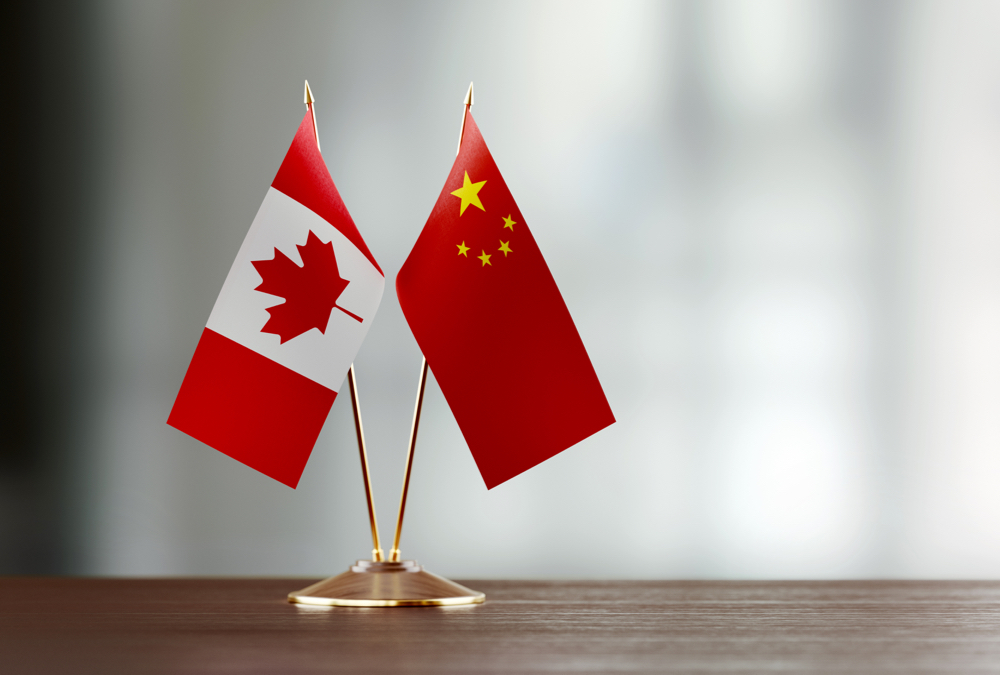Grain prices rise, and grain prices fall. Sometimes it’s a straight supply issue. more grain gets produced, or less gets produced, and prices react accordingly. but those movements tend to happen over the short term. Often too, they’re tough to plan for because they’re sparked by either good weather or bad.
Other issues hit on the demand side, however, and they can get very complex very quickly. These include issues like the health of national economies around the world, as well, how the greater commodity complex is faring. And then there are interest rates, currency fluctuations, credit availability, stock markets…
Read Also

Agronomists share tips for evaluating new crop products and tech: Pt. 3
With new products, new production practices and new technology converging on the agriculture industry at a frenetic pace in recent…
It can seem bewildering, and it can also seem a long way from the farmgate. Yet if these trends are caught soon enough and farm managers respond wisely, they can make a real difference in any farm’s economic success. market analyst and Country Guide columnist errol Anderson recently sat down to talk to us about the key trends in the global economy that bear watching this winter, and over the next few years.
Country Guide: Everyone is a bit worried about what to expect from the global economy, especially with the recent stock market volatility, which I should note you were predicting the last time we spoke. What are the things we should be watching now, especially in a global context?
Errol Anderson: There are three key geographic areas that can impact commodities, and we should probably look at all three in some detail. They’re China, the U.S., and Europe, and each of those three are in very different circumstances.
Probably the country that everyone thinks about first when it comes to commodity demand is China, and there’s no denying it’s been very important in recent years. In a lot of ways, following the crash of 2008, it was Chinese demand that kept prices high. They were still buying a lot of things like iron ore, copper and energy. That supported the overall commodity complex, and their changed diets also supported agricultural commodities. There are now some signs that their economy is slowing, and growth there is predicted to be around 6.5 or seven per cent next year. That’s still high, but in 2007, for example, their economy grew by 13 per cent. This will likely temper demand for commodities somewhat.
- More Country Guide: ‘Make the most of the 2014 market,’ part one of Gord Gilmour’s interview with Errol Anderson
The U.S. is still feeling the effects of 2008 and working their way through that. We have to remember, at the time they were really heading into a depression and they did things like quantitative easing — basically printing money — and other extraordinary measures to prevent that from happening. What remains to be seen is whether they’ve succeeded or just kicked the can down the road. I suspect they’re going to be a lot like Japan has been since the 1980s and we’re going to see a long period of extremely low growth. We’ve just seen the U.S. Federal Reserve ending their QE3 program, and what remains to be seen is if the country can maintain even modest growth without it.
But from our perspective, what was interesting was those two things playing out at the same time and how it affected us. If China saved the world economy after 2008, whatever it gave came doubly back to Canada, because we’re a commodity producer, and we’re ordinarily directly tied to the U.S. economy. But now the slowdown in China is our slow down, and unfortunately, I don’t think the U.S. is going to pick up the slack.
Guide: So it sounds like you’re most concerned about the demand, not the supply, side of the equation?
EA: Yes, I think that’s a fair way to put it. Everyone always talks about the supply side, but I really think the true driver of commodity markets is always demand. In the end, demand is king and it doesn’t matter what supply is. Supply certainly changes the picture, but only over the short term. In the long term, it’s the demand trends that set the prices in commodity markets, and unfortunately right now those trends don’t look good. We’ve seen an overall growth in the supply of all commodities, from oil to grains and everything in between. At the same time, we’re now seeing falling demand. That’s going to mean overall lower commodity prices for a period, until demand catches up, and agriculture commodities are going to go along for the ride.
Guide: You’ve said when it comes to commodity prices, there are leaders, and there are followers. Can you tell us a bit more about this?
EA: There are really two commodities that lead the rest when it comes to pricing — oil and gold. Everything else basically follows these two, even if there’s no direct connection between them.
We’ve seen gold fall substantially. In 2011, it hit its peak at around $1,900 an ounce. Right now it’s just over $1,200 an ounce. And oil, of course, has been falling too. It hit a peak in 2008 at around $140 a barrel, and they were talking credibly about $200 oil. After the crash of 2008, it fell briefly to about $40 a barrel, then recovered to around $100 a barrel. Now it’s been moving downwards again, and it’s no secret the industry is worried.
I think both of them have fallen for fairly understandable reasons. High gold prices were a reflection of economic uncertainty, and ideas of increased inflationary pressure, stemming from U.S. Federal Reserve QE stimulus. But U.S. money printing did not stoke inflation as planned. The price of gold fell back as a result. High oil prices were a reflection of demand, which fell when we had a recession, and now what’s causing them to fall even further is new supply from non-traditional oil sources like fracking — just on that alone, they’re predicting North American energy independence in the next few years.
Other commodities, like agricultural commodities, generally follow these big two. Until oil and gold begin moving up again, it’s unlikely we’ll see a large move upward in agricultural commodities. We’re just waiting for something to happen on the supply side to give us an upward tick.
Guide: What about interest rates? They can always hit hard if they go up. What do you think will happen with them over the next while?
EA: I think over time they will go up, but not immediately and not by very much when they do move. My reasoning for this is pretty straightforward. I just see too much slack in the global economy to justifying moving them upwards quickly and risk choking off any recovery that may be happening.
It’s true, they’re very low right now, but I just don’t see them rising much, like they did in the ’70s and ’80s. The difference today is debt. I was recently in New York City, and there’s a debt clock just off Times Square showing the public a real-time look at the astonishing rise in U.S. debt. If interest rates move up, it’s going to increase the cost to the U.S. federal government too much — I simply don’t think they can afford to raise rates right now. I’m not expecting to see any movement for the next 12 to 18 months at least.
When we do see movement, I suspect it’s going to be several small increments that might see interest rates rise by one or two per cent, and it’s going to be a few years out.
In other places, like Europe, there’s even more pressure to keep rates low since they’re fighting deflation. You could even see them cut rates even further over the next while. They want to do everything they can to keep their economies moving. I really think they’ve got a tough five years or so ahead of them.
That said, however, I think now would be the time to look at whether there’s any way to get your debt exposure down, while rates are low, and even though they’re going to stay low for a time.
Guide: What about currencies? The Canadian dollar has fallen relative to the U.S. dollar. What do you see driving this? What should we be watching over the next while?
EA: Two things have been happening at the same time. The U.S. dollar has strengthened, partly on the perception that the American economy is improving, partly because of the safe-haven buying, and partly from fallout of other currencies such as the Euro and Japanese yen. The U.S. dollar is still seen as a safe place to store wealth. That strengthening has pretty much been across the board against all major currencies. Then in the Canadian dollar we have seen some of the value come off because of falling commodity prices, especially oil.
Over time I think we could see that pattern continuing.
Within Canada, that’s going to do a couple things. It’s going to hurt commodity producers because their products are priced on global markets in U.S. dollars. It could help the manufacturing sector in places like Central Canada, where they’ve been in real trouble in recent years due to the strong dollar. For domestic consumers, it’s going to mean some price inflation because so much of what we consume is imported, and a lot of it from the U.S.
Over the longer term we’re going to have to watch what these currency gyrations are going to mean. They can trigger trade issues, and those can be really hard to predict.
Guide: What are some of the other things that we’ll need to be looking out for?
EA: Credit markets are another key area, especially with the move to end QE3 and any move to start a program like it in Europe. The major test of this is still straight ahead of us. Sure, the end of the program has caused a modest stock market correction, but it’s been short lived and the market has come back. Will this continue? I don’t think anyone knows for sure. But I think if, over the next few months, we saw a stock market correction of 20 to 25 per cent, there would be a lot of pressure to rethink this decision. That would, of course, have a huge impact on all the markets. So we’re certainly still not entirely out of the woods yet.
Guide: Can you boil down what this all may mean for agricultural commodity markets?
EA: I think for an agricultural producer, now is definitely a time to be very disciplined.
It’s definitely a very different world for a grain producer. It’s now a time to play defense, not offense. Cost-cutting and managing exposure are key.
There will be opportunities to find profitable prices. Markets will rally, but those rallies won’t hold, they’ll fall back. When they do occur, you need to be ready to act, because they won’t last long. I’ve said this before, but it’s a very important point to realize: unfortunately, commodity markets don’t care about your cost of production. They will sometimes pay you less than your cost of production for a very long period of time.
There will be times when there is an opportunity to lock in a great delivery basis. When you get that opportunity, you may consider a strategy of flat-pricing your cash grain and replacing your tonnage with call options to reopen the price ceiling. This strategy moves physical grain, taking advantage of a delivery opportunity, while injecting cash flow into a farm operation. But it also offers growers the opportunity to take advantage of a possible price rise later in the crop year.
Livestock producers are in a very interesting situation. They’ve enjoyed a very strong market recently, and I think they need to begin to prepare for the end of that. I can’t see these prices continuing indefinitely while you’ve basically got a third of the global economy — the U.S. — just getting by, and two-thirds of it — China and Europe — seeing slowing growth or no real growth. This global environment is going to reduce demand or, at least, dampen the appetite for purchasing any commodity at a high price point.
















